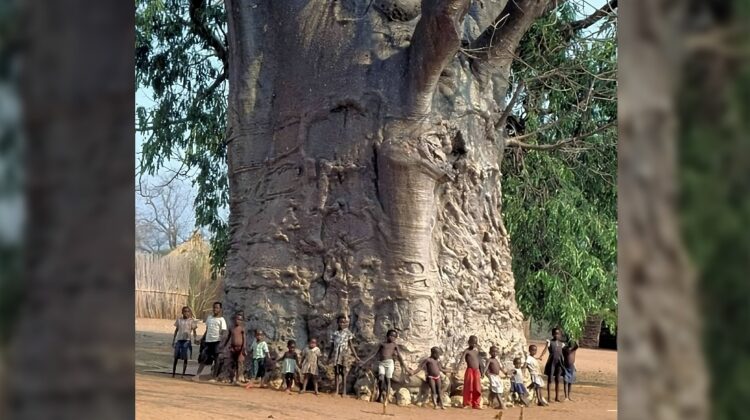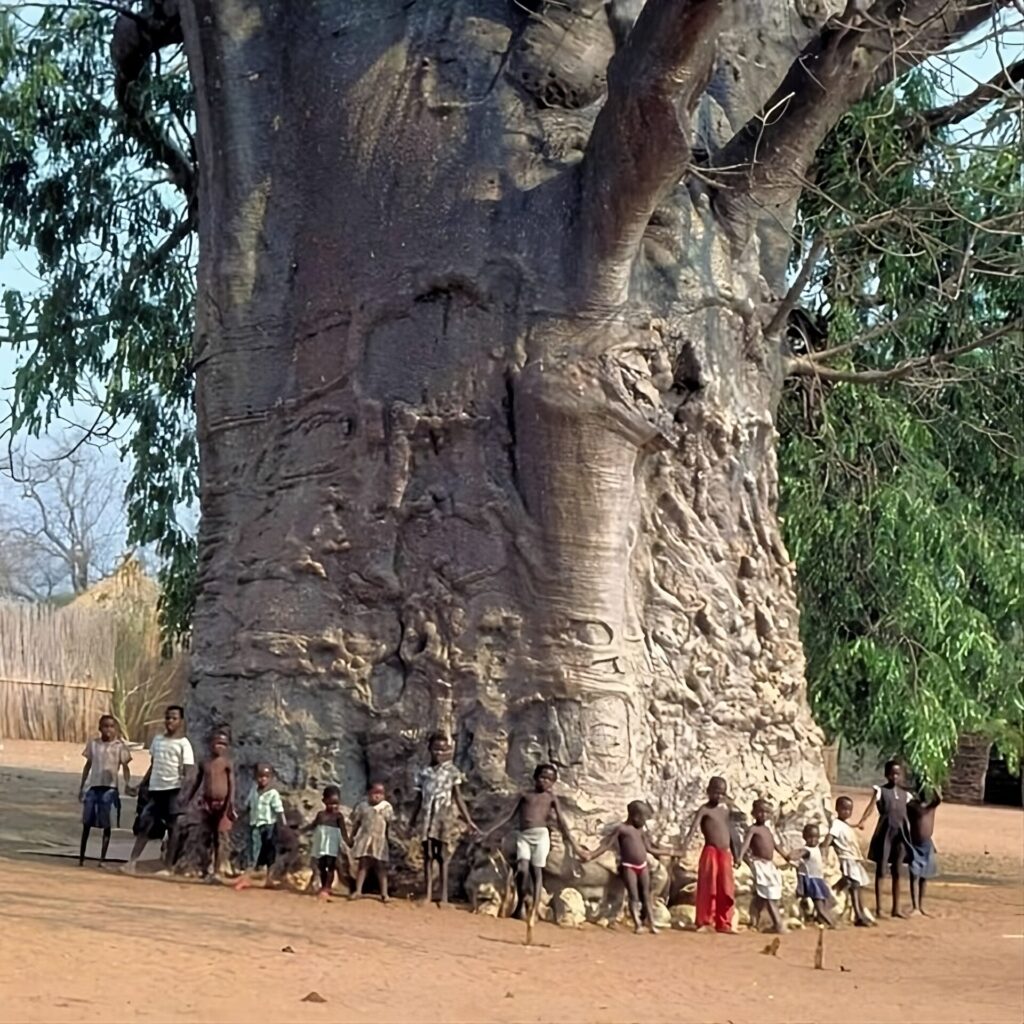
Standing tall in the Zwigodini Village of Mutale, Limpopo, South Africa, lies a 2,000-year-old wonder: a majestic baobab tree. Known to the Venda people as “Muri Kunguluwa,” which translates to “The Tree That Roars,” this ancient giant lives up to its name. When the wind whispers through its branches, it creates a low, rumbling sound, a testament to its immense size and weathered history.
But “The Tree That Roars” is more than just a sonic marvel. It embodies the very essence of life for the surrounding community. Dubbed the “Tree of Life,” this baobab serves as a vital resource for both animals and humans. An astounding 80% of its trunk is composed of water, a natural reservoir holding up to 4,500 liters. During dry seasons, this precious water becomes a lifeline for the community and the animals that share the land.

The bounty of the “Tree of Life” extends beyond its watery reserves. Elephants find sustenance in its bark, while baboons relish its fruit. Even the leaves provide a source of nourishment. The tree itself provides a haven for a variety of creatures. Birds, bees, fruit bats, and bush babies find shelter and nesting sites in its sprawling branches. Humans, too, utilize the tree’s gifts. The dried fruit powder finds its way into drinks, offering a potent dose of vitamins, antioxidants, and minerals. The bark, with its strong fibers, is transformed into rope, baskets, mats, cloth, and even paper.
Beyond its physical benefits, the baobab holds deep spiritual significance for the African people. In ancient times, leaders and elders would gather under the shade of these massive trees, seeking guidance for crucial decisions. They believed the spirits residing within the baobab would impart wisdom and ensure their choices were just and fruitful.
The 2,000-year-old “Tree That Roars” stands as a powerful symbol of resilience, resourcefulness, and the deep connection between nature and humanity. It is a testament to the enduring spirit of Africa, a living legacy that continues to nourish and inspire generations.

Leave a Reply